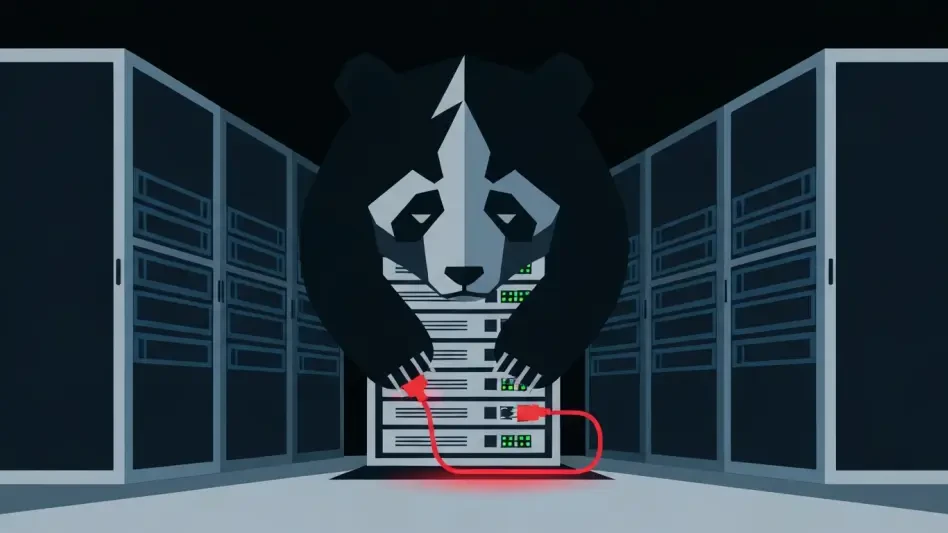In an era where healthcare giants wield immense influence over the U.S. medical landscape, UnitedHealth Group (UNH) stands at a critical crossroads, battling a storm of regulatory investigations and a devastating cyberattack that have shaken its foundation. As one of the largest players in the industry, the company’s challenges are not merely internal but resonate across the entire healthcare ecosystem, raising urgent questions about market consolidation, digital security, and systemic vulnerabilities. The dual crises of intense scrutiny from the Department of Justice (DOJ) and the catastrophic ransomware attack on its subsidiary, Change Healthcare, in early 2024, have exposed cracks in a system heavily reliant on integrated models and interconnected technology. These events are a stark reminder of the high stakes involved when financial power and digital infrastructure intersect with patient care. The unfolding saga serves as both a cautionary tale and a catalyst for change, prompting stakeholders to reevaluate long-standing practices in a sector that impacts millions of lives daily. With financial, operational, and reputational damages mounting, the broader implications for competition, policy, and security are becoming impossible to ignore, setting the stage for a transformative reckoning in healthcare.
Regulatory Pressure Mounts on Healthcare Giant
Examining Federal Investigations and Billing Practices
The Department of Justice has launched a multi-pronged assault on UnitedHealth’s business operations, zeroing in on allegations of fraudulent practices within its Medicare Advantage plans. Central to these investigations is the claim of “upcoding,” a process where the company is accused of inflating patient diagnoses to secure higher payments from federal programs, potentially costing taxpayers billions. This practice, if proven, could result in substantial fines and signal a broader crackdown on similar tactics across the industry. Beyond billing concerns, the DOJ is also examining the reimbursement practices tied to Optum Rx, UnitedHealth’s pharmacy benefit management arm, for signs of unfair manipulation that may disadvantage providers and patients. These probes, both criminal and civil in nature, highlight a growing frustration among regulators with the unchecked power of vertically integrated healthcare entities. The outcome of these investigations could redefine how such companies operate, pushing for greater transparency and accountability in a sector often criticized for opacity.
Adding another layer of complexity, the regulatory spotlight extends to UnitedHealth’s overall market influence, with accusations of anti-competitive behavior stemming from its sprawling business model. By combining insurance, pharmacy benefits, and healthcare delivery under one umbrella, the company has created a structure that critics argue stifles competition and inflates costs. State Attorneys General have joined the fray, supporting federal efforts to challenge practices that may limit patient access to affordable care. The intense scrutiny reflects a pivotal moment where the government appears determined to curb the dominance of healthcare conglomerates, using UnitedHealth as a test case. If successful, these actions could lead to significant operational restrictions or even forced divestitures, altering the company’s trajectory and sending a clear message to other industry leaders about the limits of expansion.
Halting Expansion Through Merger Blocks
Another blow to UnitedHealth’s growth strategy came when regulators blocked its $3.3 billion acquisition of Amedisys Inc., a home health provider, citing concerns over reduced competition in key markets. This decision, following the earlier acquisition of LHC Group Inc., underscores a mounting skepticism toward healthcare mergers that consolidate market power, even if they don’t create outright monopolies. The move by the DOJ and state authorities signals a broader policy shift aimed at protecting smaller providers and ensuring patients aren’t squeezed by limited choices or higher prices. This regulatory stance challenges decades of consolidation trends that have shaped the modern healthcare landscape, potentially paving the way for a more fragmented and competitive environment. For UnitedHealth, the blocked deal represents not just a financial setback but a strategic hurdle, forcing a reevaluation of how it can grow without drawing further ire from oversight bodies.
The ripple effects of this blocked acquisition extend beyond UnitedHealth, influencing how other large healthcare entities approach mergers and acquisitions, and competitors are likely watching closely, aware that similar deals could face the same fate under tightened antitrust guidelines from the DOJ and the Federal Trade Commission (FTC). Smaller providers, often squeezed out by the economies of scale larger firms enjoy, might find breathing room if this trend continues, allowing them to carve out stronger market positions. However, the immediate impact for UnitedHealth is a constraint on its ability to expand through external means, pushing the company to focus on internal efficiencies or alternative growth paths less likely to attract regulatory pushback. This development marks a critical juncture, where the balance between corporate ambition and public interest is being fiercely contested, with long-term implications for how healthcare services are structured and delivered.
Digital Vulnerabilities Exposed in Major Breach
Unpacking the Change Healthcare Ransomware Attack
In February 2024, a ransomware attack orchestrated by the ALPHV/BlackCat group struck Change Healthcare, UnitedHealth’s subsidiary and the largest medical claims clearinghouse in the U.S., unleashing chaos across the healthcare system. The breach paralyzed critical operations, disrupting pharmacy services, claims processing, and payment systems for thousands of providers nationwide, many of whom rely on Change Healthcare as their financial lifeline. With services offline for months, the incident revealed the fragility of a system overly dependent on a single vendor for essential functions, exposing the sensitive data of millions of patients—estimated at 190 million individuals—to potential misuse. UnitedHealth’s response included a controversial $22 million ransom payment, a move that highlights the desperate measures companies may take under such duress. The attack’s scale and impact have positioned it as one of the most significant cybersecurity failures in healthcare history, prompting urgent reflection on how digital infrastructure supports or undermines patient care.
The operational fallout from the Change Healthcare breach was immediate and severe, forcing healthcare providers into manual workarounds that slowed processes and strained resources, while hospitals and clinics faced cash flow disruptions as delayed payments piled up. Some resorted to furloughs or reduced services to weather the financial hit. Beyond the logistical nightmares, the breach eroded trust among stakeholders, as patients grappled with the fear of identity theft and providers questioned the reliability of their third-party partners. UnitedHealth has since invested heavily in recovery efforts, but the projected costs of $2.3 to $2.45 billion for 2024 alone underscore the immense financial toll of such an event. This incident serves as a stark warning about the cascading effects of a single point of failure, pushing the industry to confront uncomfortable truths about its digital dependencies and the adequacy of existing safeguards.
Broader Implications for Cybersecurity Standards
The Change Healthcare attack has catapulted cybersecurity to the forefront of national priorities, exposing the inadequacies of current protections in safeguarding critical healthcare infrastructure. With the breach affecting a vast swath of the population, policymakers and industry experts are sounding the alarm on the need for mandatory, robust standards to prevent similar catastrophes. Discussions around updating the Health Information Portability and Accountability Act (HIPAA) Security Rule are gaining traction, alongside proposed legislation like the Health Infrastructure Security and Accountability Act, which aims to enforce stricter cybersecurity protocols. The consensus is clear: voluntary measures are no longer sufficient when a single incident can paralyze the entire system, disrupting patient care and financial stability. This event has reframed cybersecurity as a matter of national security, demanding significant investments and a cultural shift toward proactive risk management.
Healthcare organizations, from major conglomerates to small practices, are now under pressure to reassess their digital defenses and reduce reliance on singular third-party vendors to mitigate risks. The Change Healthcare debacle has highlighted the systemic risk of interconnected platforms, where a breach in one entity can ripple through the entire network, amplifying damage. Industry leaders are advocating for diversification and redundancy in critical systems, even if such measures increase operational costs, as a necessary trade-off for resilience. Meanwhile, cybersecurity firms are seeing a surge in demand for advanced solutions like multi-factor authentication and real-time threat monitoring, positioning them as key players in the sector’s recovery. The path forward requires a delicate balance between innovation and security, ensuring that technological advancements do not outpace the ability to protect them, lest the industry face repeated crises of this magnitude.
Economic and Market Repercussions
Mounting Financial Strain on UnitedHealth
The financial repercussions of UnitedHealth’s dual crises are staggering, with the company facing a multi-billion-dollar burden from the Change Healthcare cyberattack alone. Recovery and mitigation efforts are estimated to cost between $2.3 and $2.45 billion in 2024, a figure that doesn’t account for potential fines or settlements stemming from the DOJ investigations into billing practices and anti-competitive behavior. Additionally, class-action lawsuits from affected patients and providers add another layer of legal and financial risk, further straining the company’s resources. Stock volatility has been a visible marker of investor unease, with a reported loss of over $277 billion in market value by August of the current year, reflecting deep concerns about long-term stability. These economic challenges are a testament to the high costs of navigating both regulatory and technological minefields in an industry under intense public and governmental scrutiny.
Beyond direct costs, UnitedHealth is contending with indirect financial pressures as operational disruptions from the cyberattack continue to impact its relationships with healthcare providers. The delayed payments and service interruptions have created friction with partners who rely on timely processing for their own financial health, potentially leading to lost business or renegotiated contracts that favor competitors. The looming threat of regulatory penalties, particularly if allegations of Medicare Advantage upcoding are substantiated, could result in repayments or fines that further erode profit margins. For a company of UnitedHealth’s size, these financial hits are not merely setbacks but signals of deeper structural challenges that may require a fundamental rethinking of its aggressive growth model. The economic fallout serves as a cautionary note about the risks of overexpansion without corresponding safeguards, both digital and regulatory.
Shifting Competitive Landscape and Emerging Opportunities
As UnitedHealth grapples with its challenges, the competitive dynamics within the healthcare industry are undergoing a notable transformation, creating openings for rivals and niche players alike. Companies such as Cigna, Elevance Health, Humana, Centene, and CVS Health are poised to capitalize if regulatory actions limit UnitedHealth’s ability to expand or force operational changes. These competitors could gain market share by positioning themselves as alternatives less encumbered by legal or reputational baggage, appealing to providers and patients seeking stability. Smaller healthcare entities, often overshadowed by giants, may also find opportunities to thrive in a landscape where consolidation faces greater resistance, potentially fostering a more diverse and competitive market environment. This shift could reshape how services are delivered, with an emphasis on localized or specialized care over monolithic integration.
The cybersecurity sector, meanwhile, is experiencing a boom as the fallout from the Change Healthcare breach drives demand for advanced protective technologies and services. Firms specializing in threat detection, data encryption, and system redundancy are finding new clients eager to fortify their digital infrastructure against similar attacks. Alternative claims processing vendors are also stepping into the spotlight, offering solutions to providers wary of over-reliance on a single platform like Change Healthcare. However, the immediate reality for many providers remains grim, as cash flow disruptions and operational delays persist, highlighting the uneven impact of these crises across the industry. The evolving market dynamics underscore a critical tension: while some stand to gain from UnitedHealth’s struggles, others bear the brunt of systemic vulnerabilities, illustrating the complex interplay of risk and opportunity in healthcare today.
Policy Evolution and Industry Outlook
Driving Legislative and Regulatory Reforms
In response to UnitedHealth’s crisis, policymakers are accelerating efforts to overhaul the regulatory framework governing healthcare, with a dual focus on curbing market concentration and bolstering digital security. The DOJ and FTC have introduced stricter merger guidelines to prevent deals that could harm competition, as evidenced by the blocked acquisition of Amedisys Inc., signaling a departure from the permissive stance of past decades. Simultaneously, the catastrophic cyberattack on Change Healthcare has spurred legislative proposals, including potential updates to HIPAA and the introduction of the Health Infrastructure Security and Accountability Act, aimed at mandating rigorous cybersecurity standards. These reforms, while necessary to protect critical infrastructure and patient interests, will likely impose significant compliance costs on industry players, reshaping operational priorities. The push for accountability reflects a broader recognition that the current system is ill-equipped to handle the risks posed by consolidation and digital interconnectedness.
State-level oversight is also intensifying, with Attorneys General collaborating with federal agencies to challenge practices that inflate costs or limit access to care. Bipartisan efforts in Congress to address pharmacy benefit management practices, such as spread pricing, add another layer of regulatory headwind for companies like UnitedHealth, whose Optum Rx arm is under scrutiny. These policy shifts are not merely reactive but indicative of a fundamental rethinking of how healthcare entities should operate in a landscape where public trust is fraying. The financial and administrative burden of compliance will test the adaptability of large and small players alike, potentially leveling the playing field by constraining the unchecked growth of industry titans. As these reforms take shape, their success will hinge on balancing innovation with oversight, ensuring that patient care remains the ultimate priority amid a flurry of legal and technical mandates.
Charting a Path for Systemic Resilience
Looking ahead, the healthcare industry faces the daunting task of adapting to a new reality where resilience must take precedence over unchecked efficiency, a lesson painfully underscored by UnitedHealth’s recent struggles. Reducing dependence on single vendors for critical functions, as exposed by the Change Healthcare breach, is emerging as a key strategy, even if diversification and redundancy increase operational expenses. Providers and insurers are beginning to prioritize backup systems and alternative partnerships to mitigate the risk of systemic paralysis from future cyberattacks. For UnitedHealth specifically, a pivot away from aggressive acquisitions toward organic growth and operational excellence appears necessary, alongside massive investments in cybersecurity to rebuild trust and prevent repeat incidents. This shift could redefine its role in the market, focusing on innovation in care delivery or digital health as less contentious avenues for expansion.
The broader industry must also grapple with the long-term implications of heightened regulatory constraints, which may slow the wave of consolidation that has defined healthcare for decades. Smaller providers could benefit from a more competitive environment, but they too will need to navigate the costs of compliance with new cybersecurity and operational standards. UnitedHealth’s journey through these crises offers a blueprint for what lies ahead: a delicate balance between maintaining market position and adhering to a stricter accountability framework. As legal battles, policy changes, and strategic adjustments unfold, stakeholders across the spectrum will need to monitor how these developments reshape a sector at a pivotal inflection point. The focus must remain on creating a healthcare ecosystem that prioritizes security and equity, ensuring that the lessons of recent disruptions lead to lasting, meaningful change rather than temporary fixes.








